White tea is one of China’s six major tea categories and is slightly fermented. The production process for white tea is relatively simple compared to other teas. It undergoes fewer steps than any other tea and thus remains closer to its natural state. This is also why it is called white tea, as the tea leaves are usually covered in white hairs after production, giving it a refreshing and pure feel.
Content
- Part 1: Classification of White Tea
- Part 2: Four Basic Types of White Tea
- Part 3: New White Tea vs. Old White Tea
- Part 4: Loose White Tea vs. Compressed White Tea Cake
- Part 5: Differences in Tree Species
- Part 6: Caffeine in White Tea
- Part 7: Why is it Called One-year Tea, Three-year Medicine, and Seven-year Treasure?
Classification of White Tea
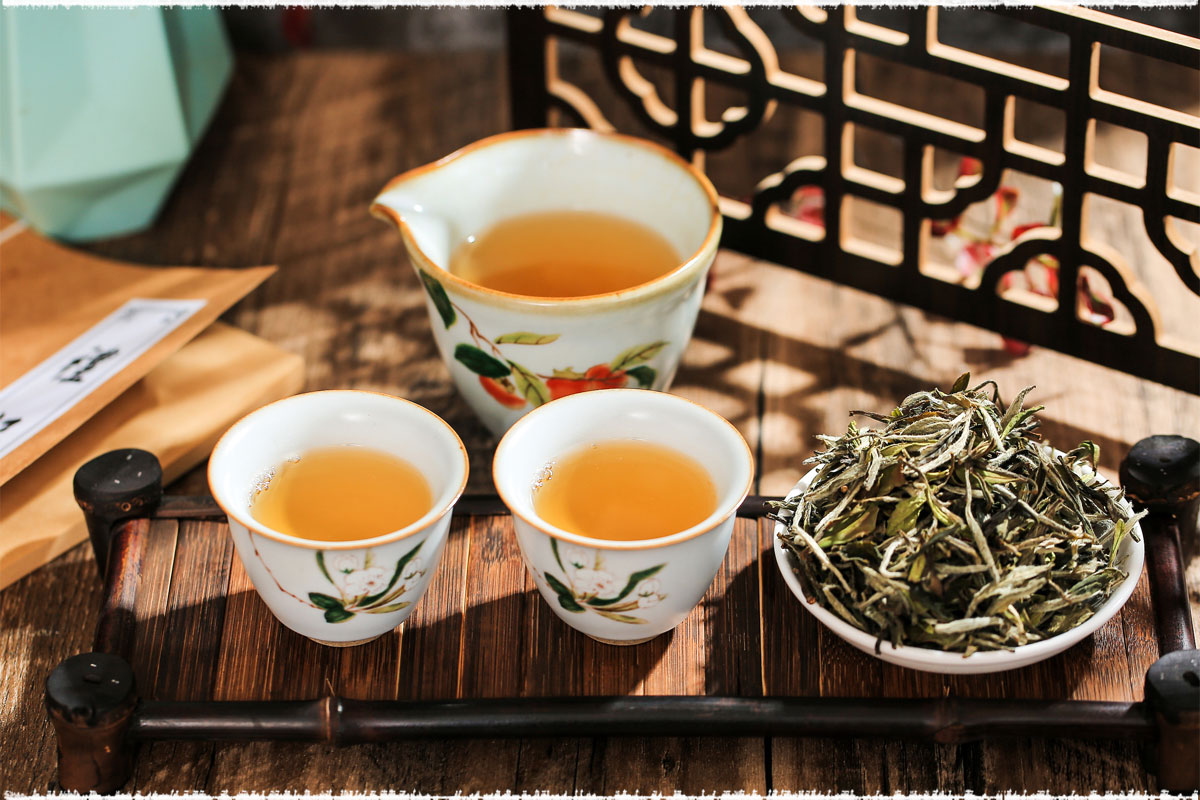

1. According to the different standards of picking and selecting: white teas can be classified as Bai Hao Yin Zhen (Silver Needle), Bai Mu Dan (White Peony), Gongmei (Tribute Eyebrow), and Shou Mei (Long Noble Life Eyebrow).
2. Based on the year of storage: New White Tea and Old White Tea.
3. Based on the different forms: Loose Tea and Cake Tea.
4. According to different Classification of tea tree species: Caicha(菜茶),Fuding Dahao(福鼎大豪茶), Fuding dabai(福安大白茶),Zhenghe Dabai(政和大白茶),Shui Xian (Narcissus水仙茶), Fuyun No. 6(福云6号茶), Jinggu Dabai(景谷大白).
Four Basic Types of White Tea
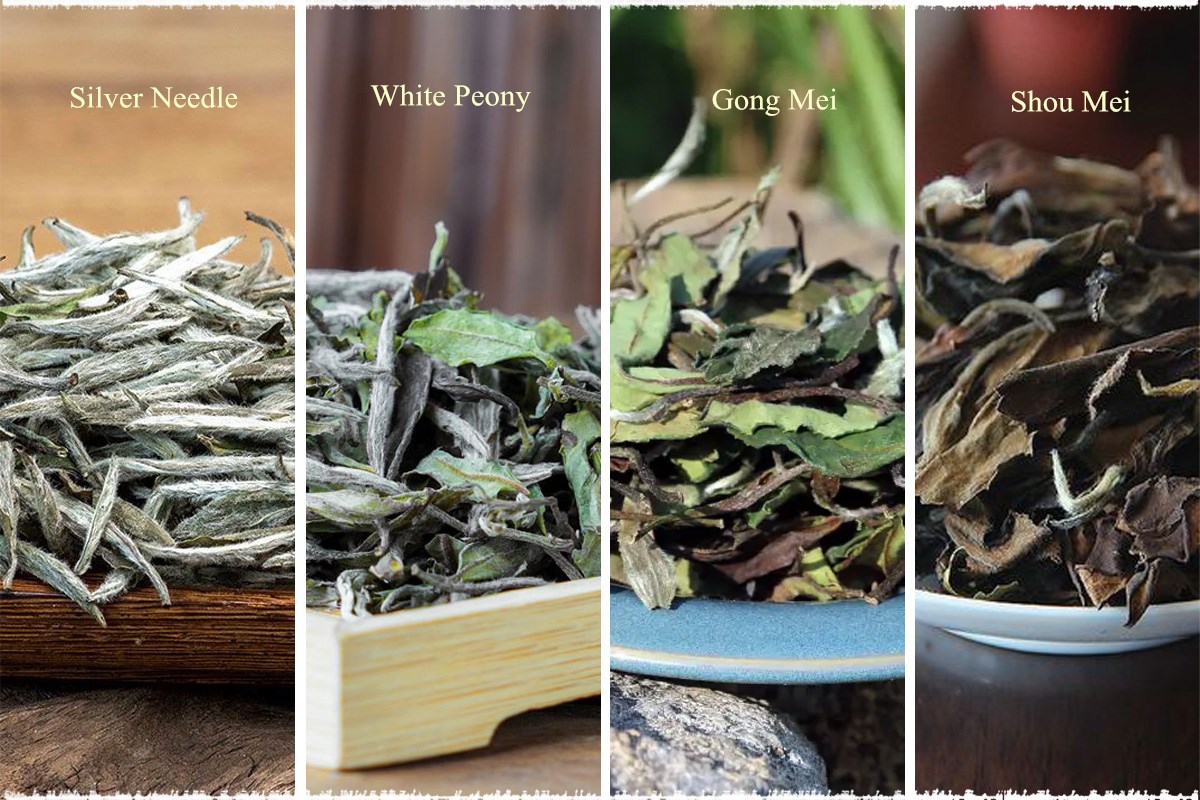

Silver Needle: Silver Needle is made from the single buds of the Dabai or Shui Xian tea bush varieties. Bai Hao Yinzhen, a specific type of white tea, typically consists of a single tea bud. The quality of the tea can be distinguished by the plumpness of the buds, with the special grade, first-grade, and second-grade varieties available.
White Peony: White Peony tea is produced using either one bud and one leaf or one bud with two leaves from the Dabai or Shui Xian tea cultivar. The quality of the fresh leaves used determines the grade of the tea, which can range from special grade to third grade.
Gong Mei: Gongmei is made from either one bud with three leaves or one bud with four leaves. Compared to spring tea, Gongmei has a richer color with leaves ranging from bronze to tawny, and larger tea stems. Previously, Gong Mei was commonly used to refer to white tea produced with small Caicha. However, the new national standard issued in 2017 states that Gongmei tea is made from the young shoots of Qunti tea tree varieties.
Shou Mei: Shoumei is a type of white tea made from the leaves of Dabai, Narcissus, or Qunti trees. The tea undergoes specific processes, including withering, drying, and picking, to produce the final product.
New White Tea vs. Old White Tea
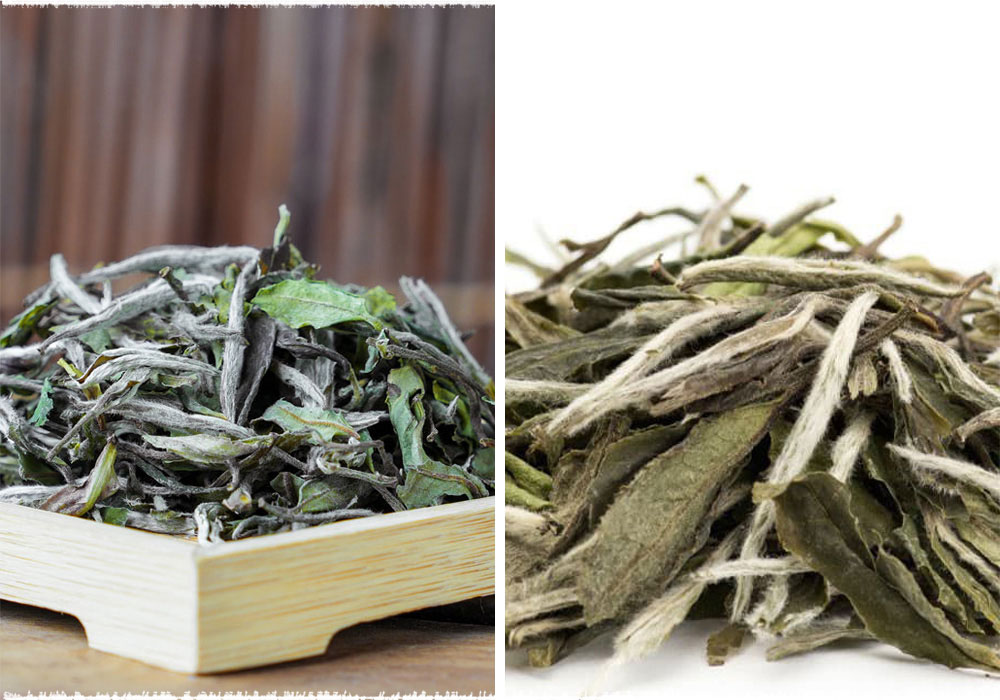

New white tea: This tea has a fresh and tender appearance with a mostly green and silvery white color.
Old white tea: The color of this tea is darker than new white tea, and it has an overall tawny, bronze, and silver-gray appearance.
Loose White Tea vs. Compressed White Tea Cake
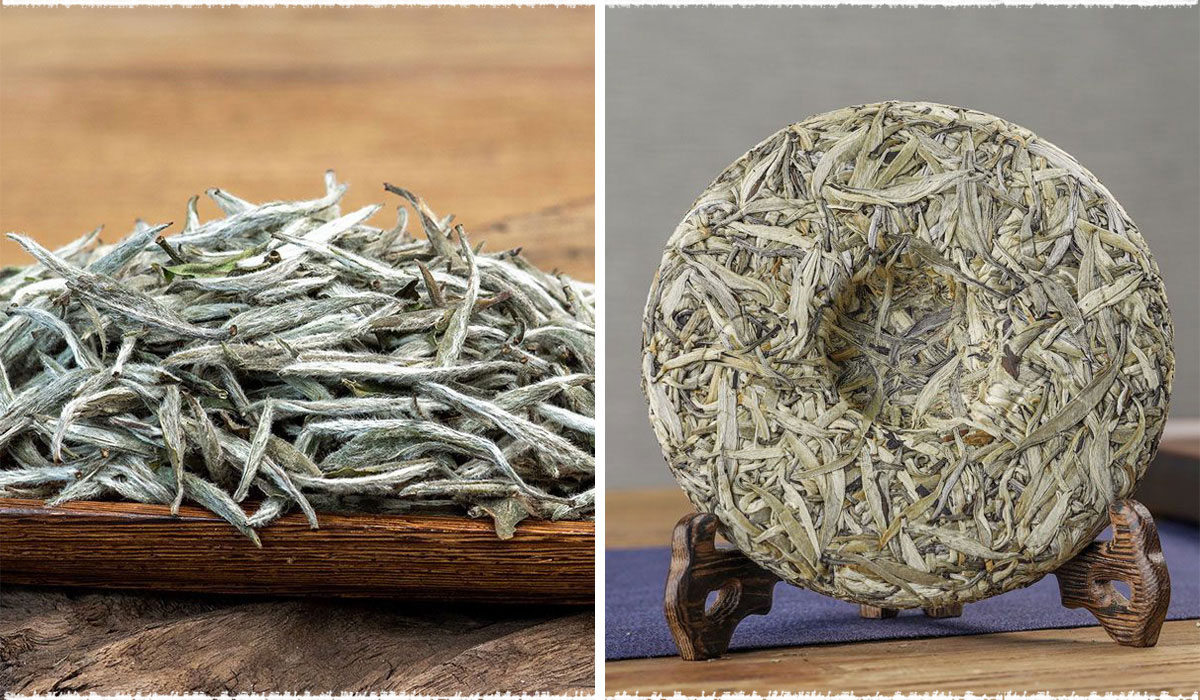

Both loose white tea and compressed white tea cake are made from the same ingredients, called Camellia Sinensis plant.
Loose Leaves White Tea: It refers to the tea that exists in a loose state, it becomes fluffy and have a natural appearance.
Compressed White Tea Cake: This is a tea shaped based on loose tea, followed by compression of the leaves into cakes. Common white tea cakes include Gongmei Tea Cake, Shoumei Tea Cake, and White Peony Tea Cake.
Differences in Tree Species
Caicha (菜茶)
Origin: Jianyang, Zhenghe, Fuding
Caicha in the white tea production area is also known as “xiaobaicha” or “Tucha”. It is not the name of a single tea tree species, meaning a group of tea plants bred only using seeds.
Fuding Dabaicha (福鼎大白茶)
Origin: Fuding
Fuding Dabaicha, also known as “Huacha No. 1” or Baimaocha, originates from Taimu Mountain in Fuding. In 1857, Chen Huan, who came from Bailiu Township successfully transplanted and bred white tea at home. Over the next century, it became widely planted in various white tea-producing regions. After the 1960s, large-scale cultivation of white tea took place in provinces such as Fujian, Zhejiang, Hunan, Guizhou, Sichuan, Guangxi, and Hubei. In 1985, the National Crop Variety Approval Committee recognized it as a national variety, and it was given the number GS1091–1985.
Fuding Dahaocha (福鼎大毫茶)
Origin: Fuding
Fuding Dahaocha, also known as “Huacha No. 2” and referred to as Dahao originated in Wangjiayang Village, Diandou Town, Fuding City. It was extensively cultivated in Jiangsu, Zhejiang, Sichuan, Jiangxi, Hubei, Anhui, and other provinces and regions in the 1970s. In 1985, the National Crop Variety Validation Committee recognized it as a national variety with GS13002 – 1985.
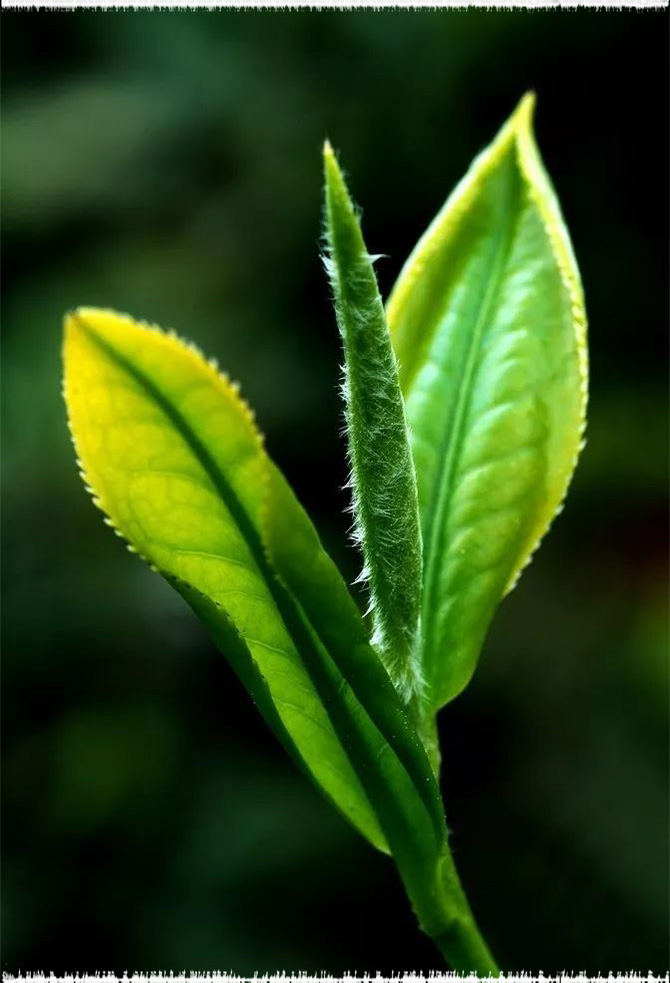

Fu’an Dabaicha (福安大白茶)
Origin: Fu’an, Zhenghe, Songxi
Fu’an Dabaicha, also known as Gaoling (高岭) Dabai tea, which originated in KangChu Town, Fuan City, Fujian Province, and is primarily grown in the eastern and northern Fujian tea area. However, it is also cultivated in Guangxi, Anhui, Hunan, Hubei, Guizhou, Zhejiang, Jiangxi, Jiangsu, Sichuan, and other provinces and autonomous regions.
Zhenghe Dabaicha (政和大白茶)
Origin: Zhenghe, Songxi
Zhenghe Dabaicha, also known as Zhengda (政大), originates from Gaocangtoushan, Tieshan Township, Zhenghe County. It was designated as an improved tea species in China in 1972, and in 1985, the National Crop Variety Approval Committee recognized it as a national fine variety, numbered GS13005-1985.
Shui Xian (Narcissus, 水仙茶)
Origin: Jianyang
Shui Xian is also known as Shuiji Shui Xian or Wuyi Shui Xian. It is native to Dahu Village, Xiaohu Township, Jianyang County (now Jianyang District), Fujian Province, and has a cultivation history of more than 100 years. In 1985, the National Crop Variety Approval Committee recognized it as a national fine variety, numbered GS13009-1985.
Fuyun No. 6 (福云6号茶)
Origin: Fu’an, Zhenghe
From 1957 to 1971, the Tea Research Institute of the Fujian Academy of Agricultural Sciences developed Fuyun No. 6 from the naturally occurring hybrid offspring of Fuding Dabaicha and Yunnan large-leaf species using the single-plant breeding technique. In 1987, it was approved by the National Crop Variety Approval Committee, with the variety approval number GS13033-1987.


Jinggu Dabai (景谷大白)
Origin: Yunnan
Jinggu Dabai is produced in Jinggu County, Yunnan, and the tea made from this variety is known as “Moonlight White”. Compared to Fuding white tea, it has less pekoe, and its fragrance and freshness may not be as impressive. However, it is rich in aroma, and its tea soup is mellow and full-bodied, making it very delicious. Furthermore, its unique characteristics make it a favorite tea among many tea lovers.
Caffeine in White Tea
White tea is also made from the Camellia Sinensis plant and is naturally caffeinated. However, the caffeine content in white tea is 15% less than traditional green tea. Generally, a 250 ml cup of white tea contains 6-55 mg of caffeine, and the specific amount of caffeine is also affected by many factors, such as the brewing temperature and time, etc…
Why is it Called One-year Tea, Three-year Medicine, and Seven-year Treasure?


One-year Tea: It refers to the white tea produced this year. Since White tea is slightly fermented, so the first-year white tea tastes similar to green tea. When brewed, it gives off a fresh and pure fragrance and tastes like soy milk. The color of the tea is light yellow and bright, while the taste is refreshing and mild.
Three-year Medicine: White tea that has been stored for three or four years is referred to as aged white tea, and during this time, its properties undergo a subtle transformation. When white tea is stored properly, its internal components begin to change within two or three years. The green color fades, and the soup color deepens to an apricot or orange hue.
New white tea has a sweet and pekoe fragrance, usually described as “pekoe fragrance and honey charm”, while aged white tea often has a “lotus leaf fragrance”. As time passes, the aroma of aged white tea becomes mellow, the taste becomes softer, and the texture smoother. At this point, white tea is both a beverage and a medicinal herb, which is suitable for consumption and storage.
Seven-year Treasure: It refers to white tea stored for seven years, making it a rare and highly sought-after variety of tea. Due to its age, the tea develops a unique sweet and floral aroma, with notes of an “aged” aroma that can be noticed when sniffed carefully.
Over time, the tea will continue to develop, with the aroma eventually taking on a “date” scent and even developing a pleasant “medicinal” aroma. Because of its rarity and unique qualities, many tea lovers consider it a treasure and hesitate to drink or sell it.
 Exploring the Charms of 2024 Spring Tea Garden with Angel
Exploring the Charms of 2024 Spring Tea Garden with Angel Yingde Black Tea
Yingde Black Tea Matcha vs. Green Tea Powder
Matcha vs. Green Tea Powder
